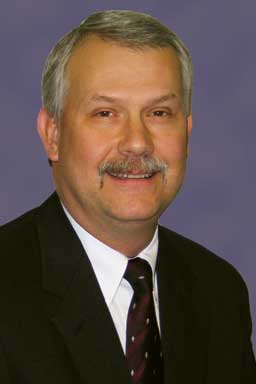As I write this in January, we are just coming out of some of the coldest weather in many years. The TV news is full of weather-related stories and features. The meteorologists have been busy reporting on the record-setting low temperatures and the unrelenting wind chill. Their biggest challenge is in coming up with new, unused adjectives to describe the cold. I have even learned a new term: “polar vortex.” It seems that this is a sizable, rotating mass of bitterly cold air that is usually sitting over the polar region far to our north. It somehow found its way into the United States, including Iowa.
This vortex or spinning air flow is described on Wikipedia as a “turbulent flow” that can “move, stretch, twist, and interact in complex ways.”1 Not only is this an apt description of a weather phenomenon, but a vortex might be used to describe what is currently swirling around the pork industry. We find ourselves waiting for the next big issue to be flung out of the vortex into our faces, demanding our attention.
Pick your issue, whether it is antibiotic availability, sow housing, pig welfare, transboundary disease (eg, porcine epidemic diarrhea), foreign animal disease, porcine reproductive and respiratory syndrome, or a host of other pig diseases. There is no shortage of issues that have the potential to impact pork production. You are not alone if you feel like asking someone to stop the spinning so you can get out of this vortex. The trouble is that there is no one to stop the spinning. Just like the cold of the polar vortex, the flurry of issues is unrelenting and we have no choice but to face them.
Dealing with this vortex of issues can be frustrating and daunting. The broad range of issues and the forces underlying them require that time and effort be put into understanding and effectively responding. Unfortunately, there is no one to whom this can be passed off. Farmers and veterinarians, along with the organizations that represent them, are the people who will be impacted and thus must take a leadership role.
As veterinarians, our instinct is to diagnose and solve a problem with appropriate treatment, then move on to the next problem. Our strength lies in our ability to take care of the animals in our charge regardless of what Mother Nature throws in our faces in the form of weather or disease or even human nature. However, many of the issues confronting us today are not easily solved, nor can they be ignored or underestimated as to their impact on the farm.
For me, one of the keys to handling this vortex of issues is maintaining and remaining true to the core values of swine veterinarians and AASV. First and foremost, we must continue to be committed to the health and well-being of the pigs. We must ensure the availability and delivery of veterinary medicine to every farm in need. We must be committed to our clients, the pork producers who work on the farms providing daily care of the pigs. Lastly, we must remain grounded in the science of swine health and production.
Our core values cannot prevent change from occurring in the pork industry. It would be naive to think otherwise, given the external forces coming to bear. By naming our core values, we can set a foundation for meeting each issue head-on with no doubt as to where we stand. Some changes may not be for the best, and veterinarians will be instrumental in advocating for the pigs and producers. There will be times when compromise is the answer, but we as the profession of swine veterinary medicine must draw the line when the compromise infringes on our core values of what we know to be right.
Reference
1. Wikipedia. Polar vortex. Available at: http://en.wikipedia.org/wiki/Polar_vortex. Accessed 14 January 2014.
